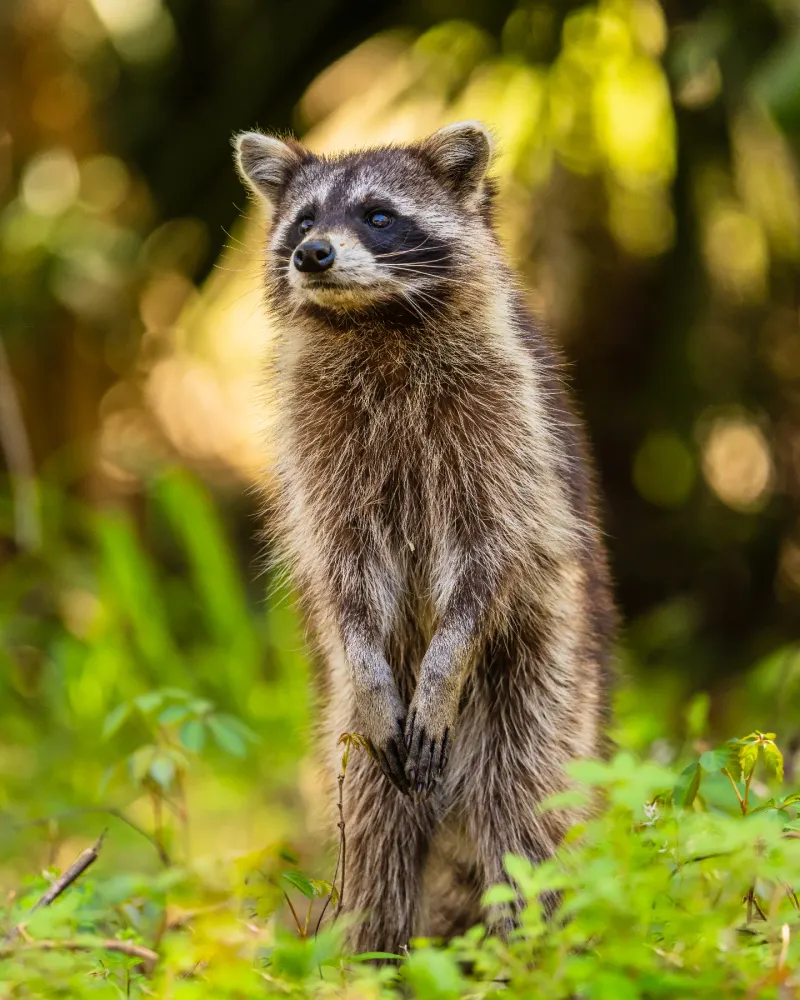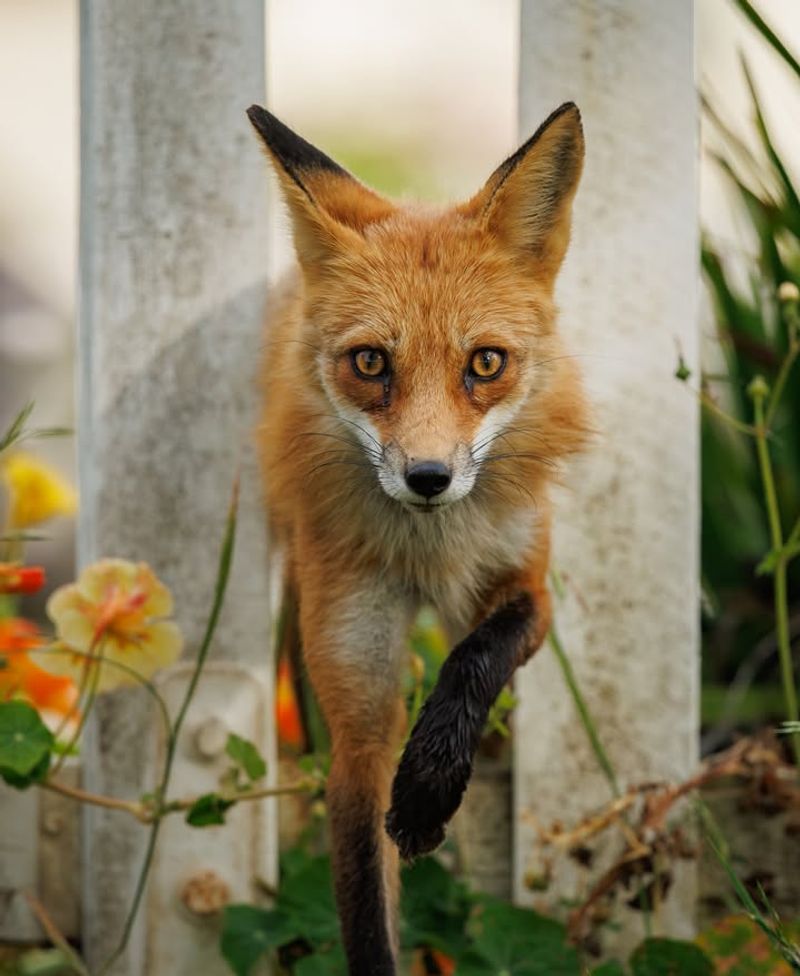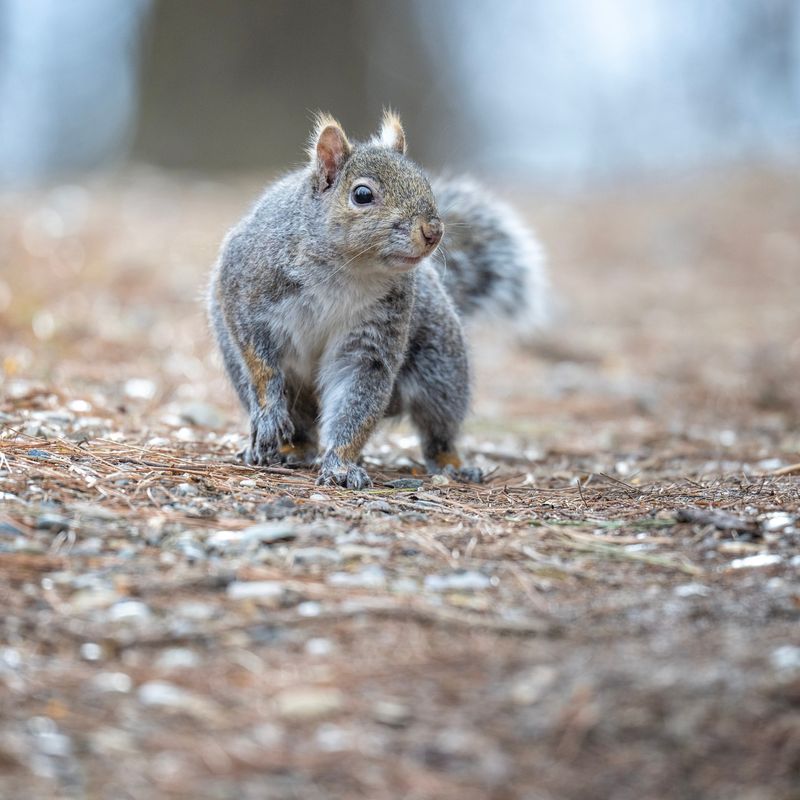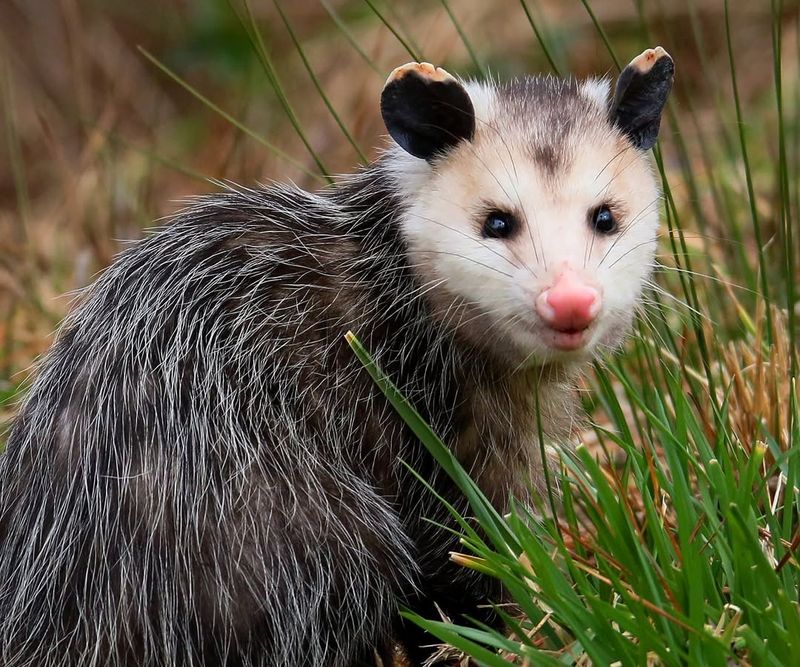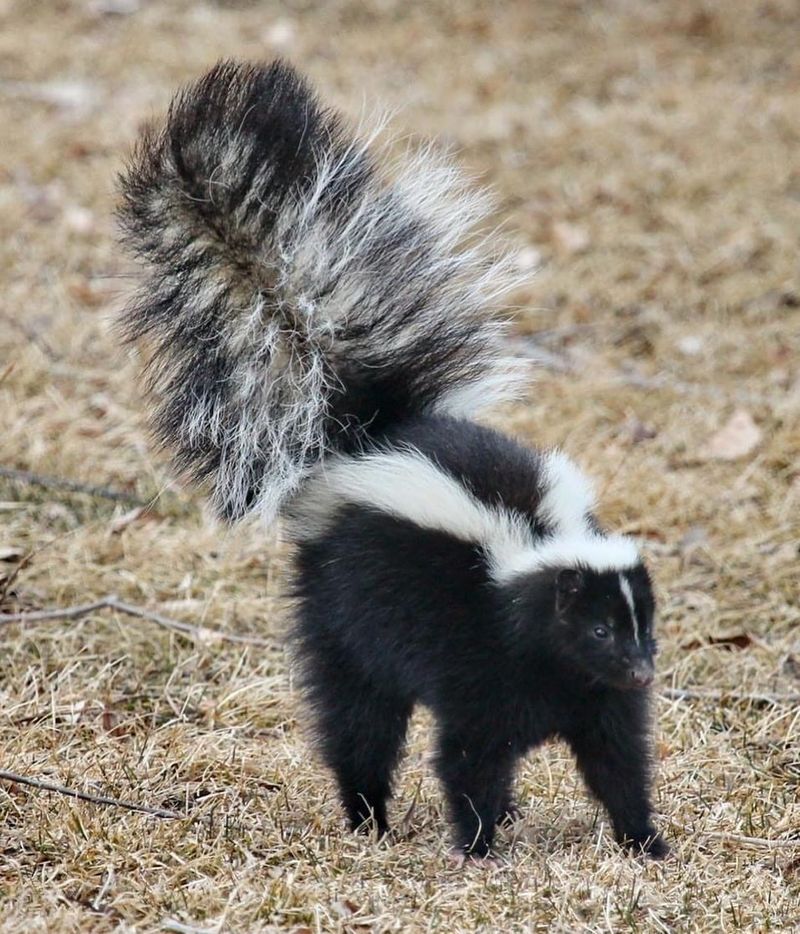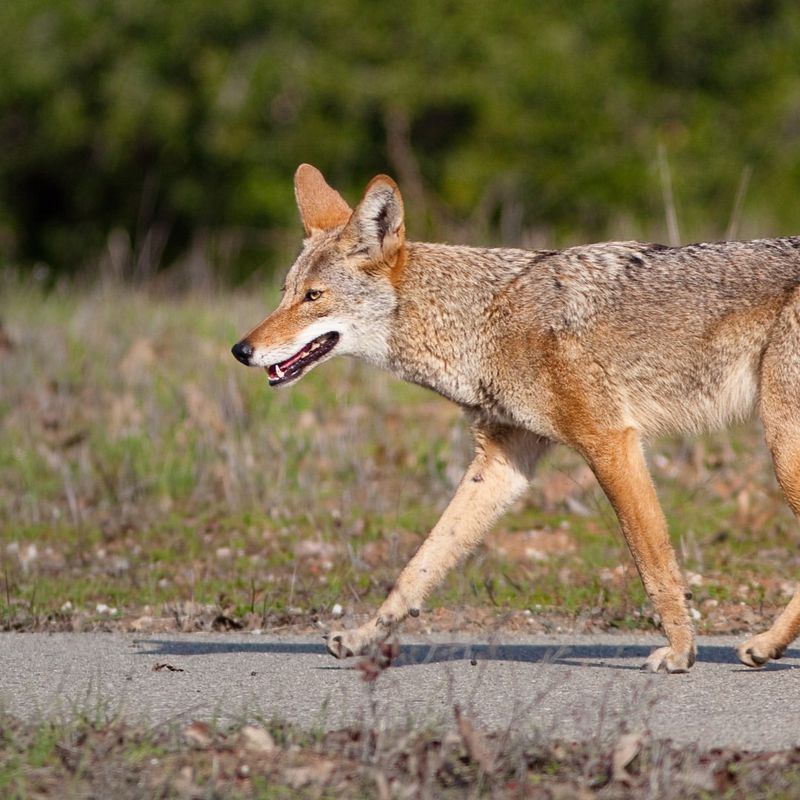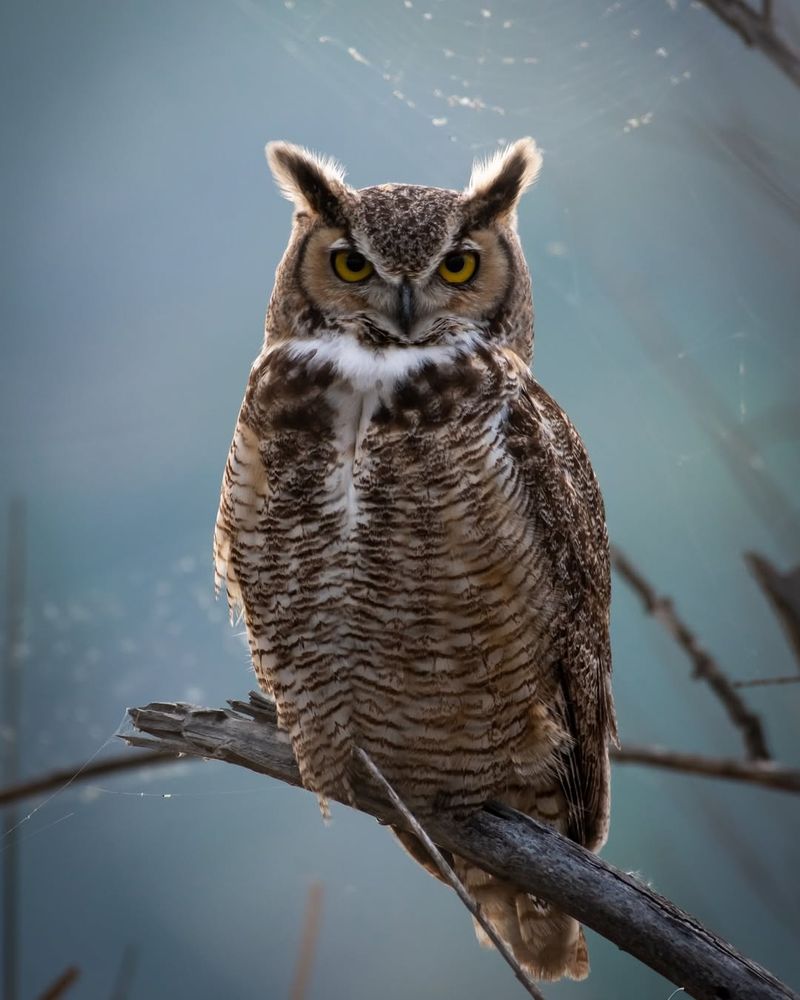Nebraska cities have a surprising amount of wildlife running around, and I didn’t realize it until one showed up near my porch. It’s kind of exciting and a little shocking at the same time.
Once you start paying attention, you notice just how many animals have adapted to city life. Here are the ones you might spot without even leaving your neighborhood.
1. White-Tailed Deer
Graceful and surprisingly bold, white-tailed deer have become regular visitors to Nebraska neighborhoods. Parks, golf courses, and backyards with gardens are their favorite hangouts.
Homeowners across the state often spot them munching on flowers and shrubs during early morning or dusk. Their ability to leap fences up to eight feet high makes them excellent urban explorers.
If you want to protect your plants, consider installing taller fencing or using deer-resistant varieties that these browsers find less appealing.
2. Eastern Cottontail Rabbit
With their fluffy tails and twitching noses, eastern cottontails are practically everywhere in Nebraska cities. They thrive in yards, parks, and even parking lot edges where grass and bushes provide cover.
Most active during twilight hours, these rabbits love nibbling on clover, vegetables, and garden plants. Their populations boom in spring when baby bunnies appear by the dozens.
Keeping your lawn mowed and removing brush piles can help discourage them from settling in too close to your home.
3. Raccoon
Famous for their bandit masks and nimble paws, raccoons are nighttime troublemakers throughout Nebraska neighborhoods. Garbage cans, pet food bowls, and attics are irresistible to these clever creatures.
They’re incredibly smart and can open latches, unscrew jars, and remember solutions to problems for years. Urban areas provide them with abundant food sources and cozy den sites.
Securing trash lids with bungee cords and bringing pet food indoors at night will help keep these masked visitors at bay.
4. Red Fox
Sporting gorgeous rusty-red coats and bushy white-tipped tails, red foxes have adapted beautifully to Nebraska city life. They hunt rodents, rabbits, and even insects in parks and residential areas.
Mostly active at dawn and dusk, these solitary hunters are incredibly beneficial for controlling pest populations. Residents across the state sometimes spot them trotting down sidewalks or through yards.
Foxes are generally shy and will avoid humans, but keeping small pets supervised outdoors is always a smart precaution in Nebraska.
5. Eastern Gray Squirrel
Acrobatic and endlessly entertaining, eastern gray squirrels dominate Nebraska’s urban tree canopies. Watch them leap from branch to branch or scold intruders with chattering calls.
Bird feeders are their favorite targets, and they’ll perform impressive gymnastics to reach seeds. These bushy-tailed rodents also bury thousands of nuts each fall, inadvertently planting countless trees.
Using squirrel-proof feeders and trimming branches away from your roof can prevent unwanted attic guests throughout Nebraska neighborhoods.
6. Opossum
North America’s only marsupial, the opossum might look odd with its rat-like tail and pointed snout, but it’s harmless and helpful. Nebraska cities provide perfect habitat with plenty of hiding spots and food.
Opossums eat ticks, insects, rodents, and garbage, making them nature’s cleanup crew. When threatened, they famously play dead rather than fight.
If you find one in your yard, simply leave it alone—it will likely move on by morning without causing any trouble to Nebraska residents.
7. Striped Skunk
Instantly recognizable by their bold black and white stripes, striped skunks waddle through Nebraska neighborhoods searching for grubs and insects. They’re actually quite docile unless they feel cornered.
Their famous defensive spray is a last resort, typically preceded by foot-stamping warnings. Skunks often den under porches, sheds, and decks during colder months.
Sealing crawl spaces and removing outdoor food sources helps prevent skunks from taking up residence too close to your Nebraska home.
8. Coyote
Adaptable and intelligent, coyotes have successfully colonized Nebraska cities in recent decades. They control rodent and rabbit populations while navigating urban landscapes with remarkable skill.
Usually spotted alone or in pairs, these wild canines are typically active at dawn and dusk. Most Nebraska residents never see them despite living nearby.
Never feed coyotes or leave pet food outside, and always supervise small pets during outdoor time to ensure everyone’s safety across Nebraska communities.
9. Canada Goose
With their honking calls and V-shaped flight formations, Canada geese are impossible to miss in Nebraska cities. Parks, golf courses, and retention ponds attract huge flocks year-round.
Many geese no longer migrate, choosing instead to stay put where food and water are plentiful. Their droppings can become problematic in heavily used areas.
Discouraging feeding and allowing natural vegetation around ponds helps manage goose populations in Nebraska neighborhoods without conflict.
10. Great Horned Owl
Powerful and mysterious, great horned owls hoot through Nebraska nights from city trees and parks. Their distinctive ear tufts and yellow eyes make them unmistakable when spotted.
Hunting rodents, rabbits, and other small animals, these skilled predators help control pest populations naturally. Their deep hooting calls often echo through neighborhoods after dark.
If you hear them calling in Nebraska, consider yourself lucky—these magnificent birds are beneficial neighbors that rarely cause problems for residents.




